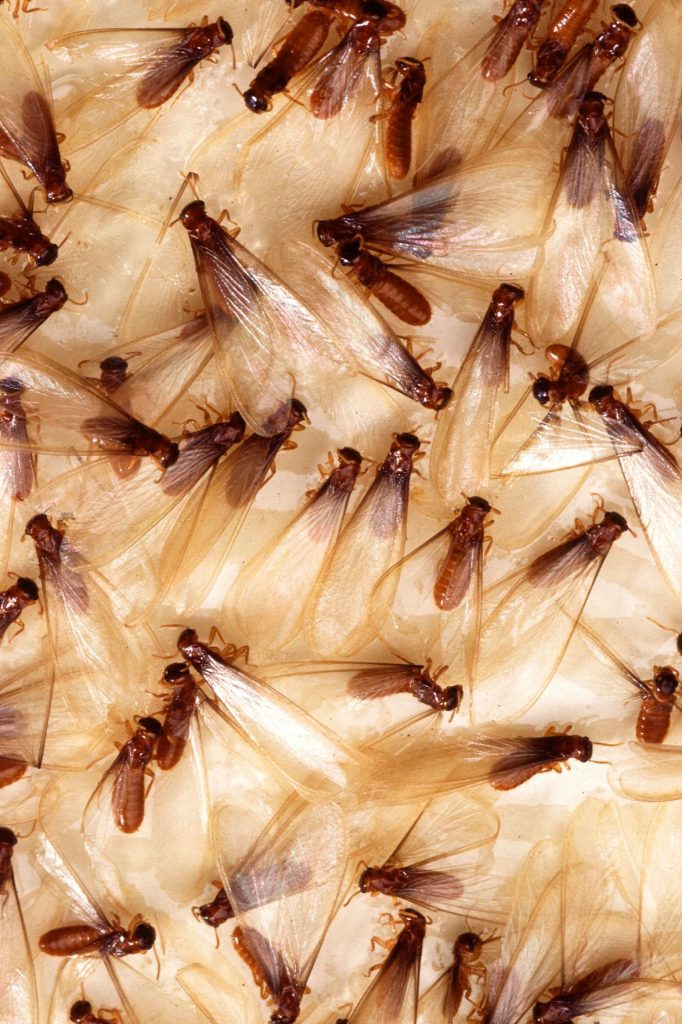Termites are a serious problem in Ohio. They can cause significant damage to homes, resulting in costly repairs and renovations. In this article, we’ll explore the dangers of termites in Ohio and how to protect your home from them.
Types of Termites in Ohio
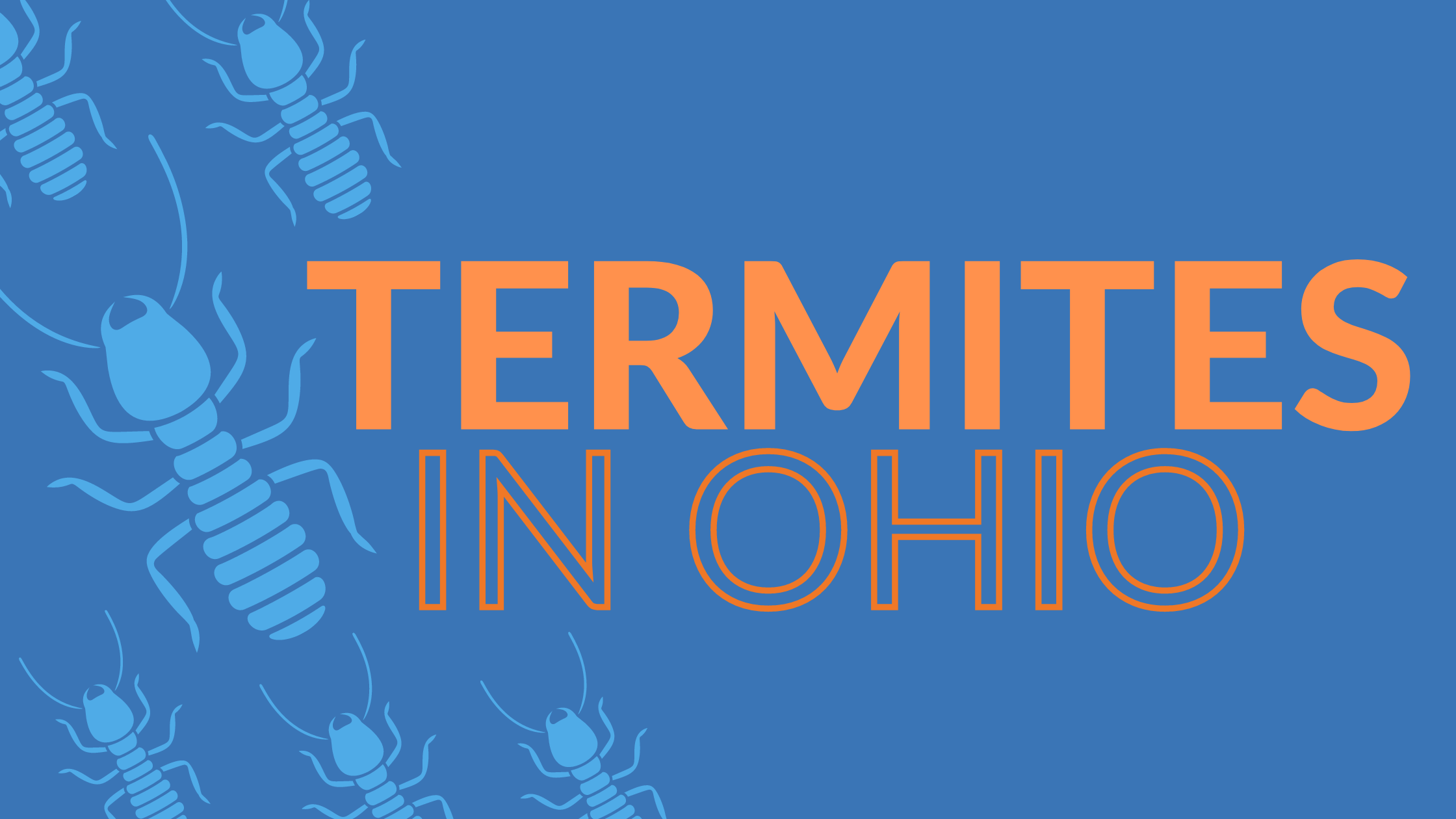
- Eastern Subterranean Termite
- Formosan Subterranean Termite
- Dampwood Termite
- Drywood Termite
The most common type of termite in Ohio is the Eastern Subterranean Termite. This species derives its name from its ability to live and nest in the ground, and is the most widely distributed termite in the United States. They build mud tubes to travel through and feed on wood, paper, plastics, and other materials that contain cellulose.
Formosan Subterranean Termites are an invasive species, native to parts of Asia, that were introduced to the United States in the 1940s. This species builds large colonies and can cause more damage in a shorter amount of time than other species.
Dampwood Termites are a species that prefers to nest in damp, decaying wood, and can be found in Ohio. They typically cause less damage than other species, since they prefer damp, decaying wood.
Drywood Termites are a species that prefers to nest in dry wood and can be found in Ohio. They are more destructive than dampwood termites, and can cause extensive damage to a building if left untreated.
Signs of Termites in Ohio
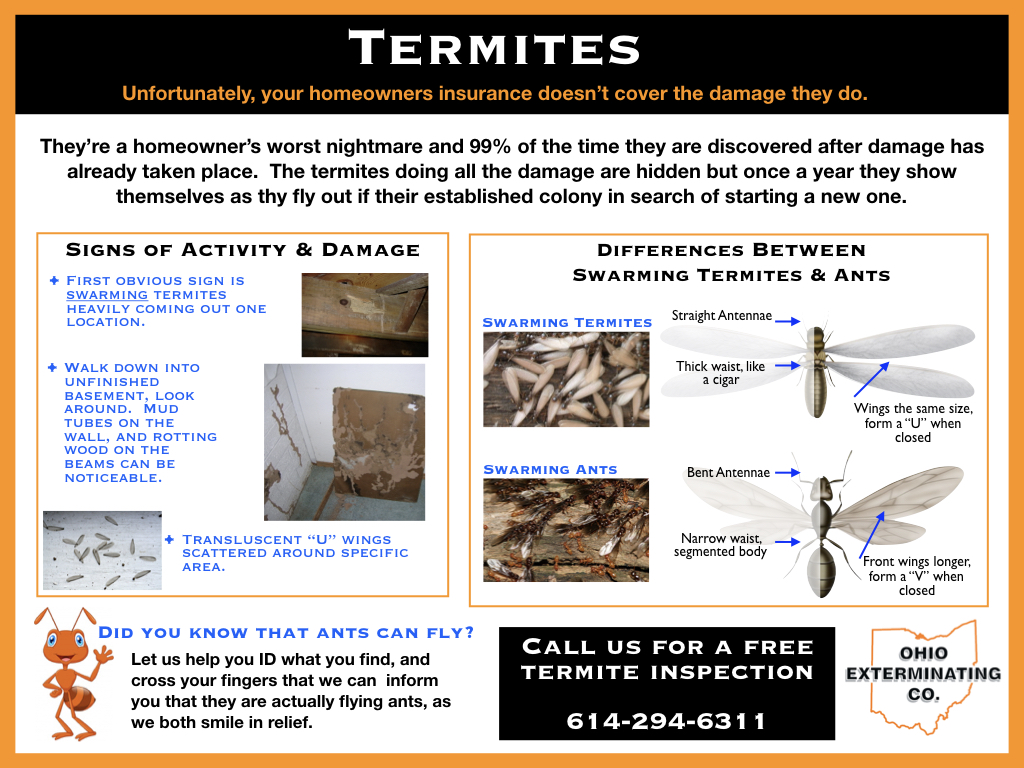
| Sign | Description |
|---|---|
| Mud Tubes | Subterranean termites build mud tubes to reach above-ground food sources, often on walls or foundations of buildings. |
| Droppings | Termite droppings, also known as frass, are a sign of an infestation. Droppings are dry and look like sawdust or coffee grounds. |
| Discarded Wings | Discarded wings from termites, found near windowsills and doors, are a sign of a swarm. Termites swarm when they are ready to mate and look for new nesting sites. |
| Damaged Wood | Look for signs of damage in wood, such as hollowed-out areas or wood that sounds hollow when tapped. |
Prevention of Termites in Ohio
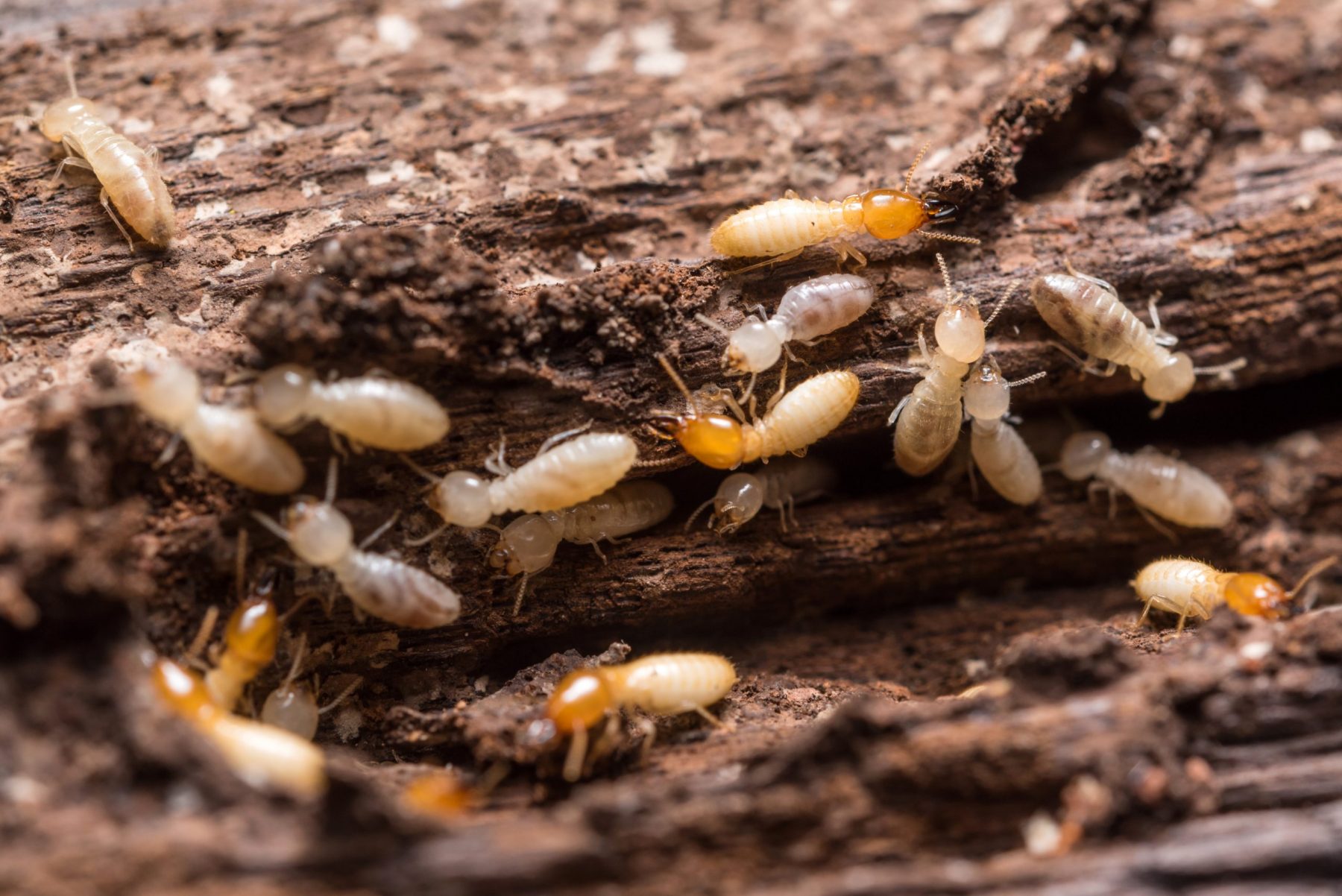
Termite prevention is a crucial part of maintaining the health of the home and property in Ohio. Homeowners need to be aware of the signs of termite activity, and take steps to prevent them from becoming a problem.
The first step in preventing termites is to inspect the home and property regularly. Look for signs of termite activity, such as wood that is damaged or buckling, mud tubes on the foundation, or swarms of winged termites. If any of these signs are present, contact a pest control professional for an inspection and treatment plan.
In addition to inspection, there are steps homeowners can take to reduce the risk of termite activity. Make sure there is no wood-to-soil contact anywhere on the property. This means removing any stumps, logs, or other wood debris from the yard. Also, keep the soil around the foundation elevated and free of mulch, which can provide a food source for termites.
Another important step is to reduce moisture in and around the home. Repair any leaks in the roof, foundation, or plumbing, and install gutter guards to keep water away from the foundation. Make sure the soil around the base of the house slopes away from the foundation to prevent water from pooling.
Finally, homeowners should make sure that any wood used in the home or on the property is pressure-treated or naturally resistant to termites. This includes decks, fences, and any other wood structures.
Taking these steps can help reduce the risk of termites in Ohio and keep the home and property safe from damage.
Treatment of Termites in Ohio
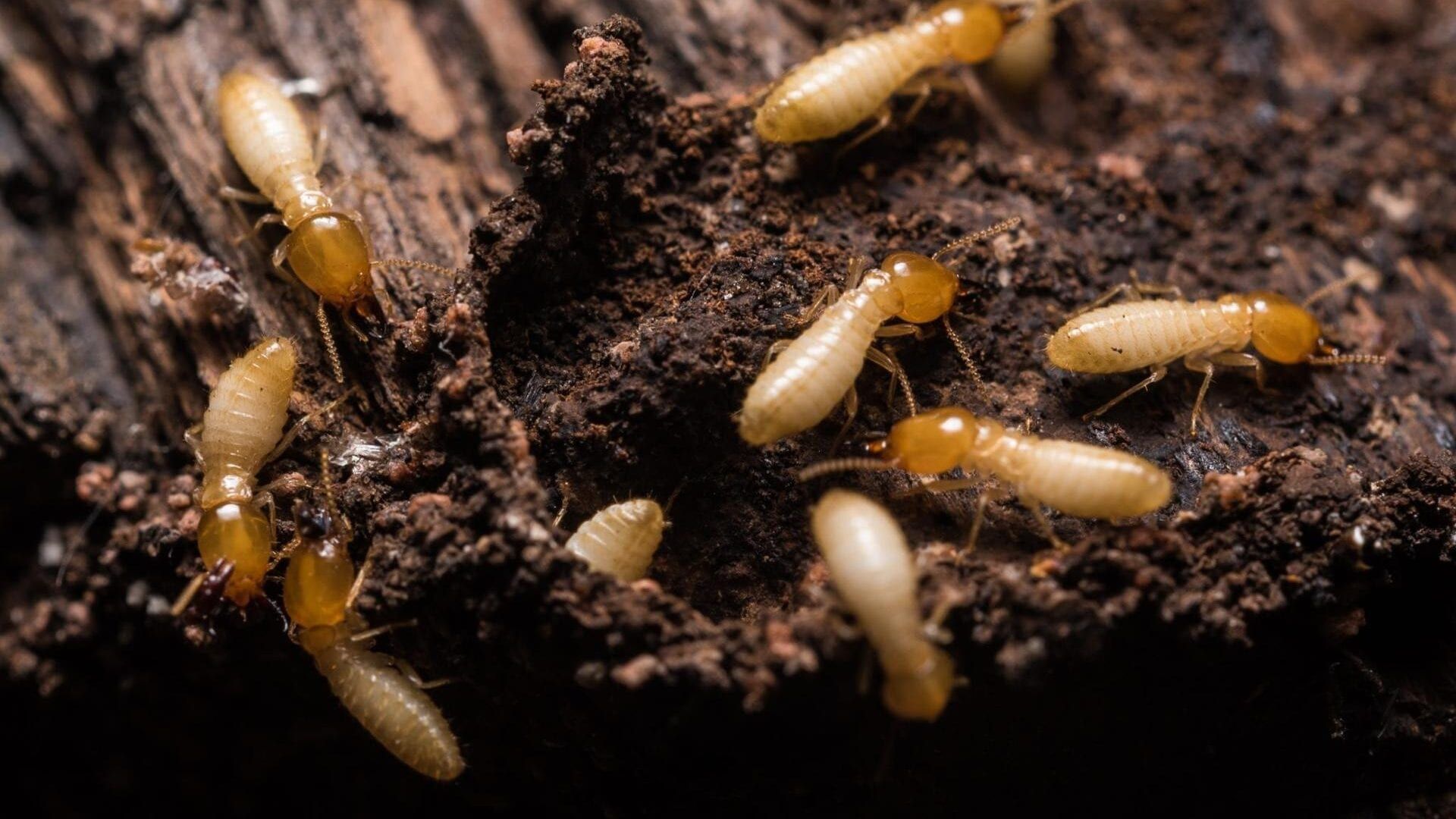
Ohio is home to several species of termites including the eastern subterranean, dampwood, and drywood species. Termites can cause significant damage to homes and property, so it is essential to take steps to protect your property from these pests. Treatment of termites in Ohio should be done as soon as possible to prevent further damage.
The most common form of termite treatment in Ohio is the use of liquid termiticides, which are sprayed or injected into the soil around the foundation of the home. This form of treatment is generally done by a pest control professional. Additionally, baiting systems can be used to treat termite infestations. These systems are placed around the perimeter of the home and contain a wood-based food source that attracts termites away from the home, allowing the bait to be treated with termiticides.
Another form of treatment is fumigation, which is used to kill off entire termite colonies. This form of treatment requires the home to be tented and all occupants to be evacuated while the fumigants are released. Fumigation is a very effective form of treatment but it is also costly and disruptive.
Finally, preventive measures can be taken to reduce the risk of termite infestation. These measures include proper ventilation and moisture control, installation of termite shields around the foundation, and regular inspections by a pest control professional.
Overall, termites can be a serious problem in Ohio and it is important to take measures to protect your home. Treatment of termites in Ohio should be done as soon as possible to prevent further damage. It is best to contact a professional pest control expert to discuss the best treatment options for your specific situation.
Flying Termites in Ohio
| Type | Appearance | Location |
|---|---|---|
| Subterranean Termites | Small and yellowish-white | Anywhere in Ohio |
| Drywood Termites | Small and reddish-brown | Southern part of Ohio |
| Formosan Termites | Small and yellowish-brown | Cincinnati and Cleveland |
Ohio is home to three main species of termites. Subterranean termites are the most common type, and are found throughout the state. These termites are small and yellowish-white in color, and live in underground colonies. They usually enter homes through cracks in the foundation or through gaps in the walls.
Drywood termites are found in the southern part of Ohio, and are smaller and reddish-brown in color. These termites can survive in dry wood and don’t require contact with the soil. They usually enter homes through air vents or through exposed wood.
Finally, Formosan termites have recently been found in Cincinnati and Cleveland. These termites are small and yellowish-brown in color, and can cause significant damage if left untreated. They travel in swarms and typically enter homes through cracks and crevices.
It is important to recognize the warning signs of a termite infestation and to take the necessary steps to prevent one. Flying termites are often the first sign of an infestation, and homeowners should contact a professional if they suspect their home is infested.
What Do Termites Look Like in Ohio
Termites in Ohio are most commonly subterranean termites, which are small, pale-colored insects with long bodies and six legs. They range in size from 1/4 inch to 1/2 inch long. They can be recognized by their straight antennae and wings that are twice as long as their bodies. Termites in Ohio often swarm in spring and summer months, usually near light sources on the exterior of homes. Swarms are an indication of a nearby colony. Other signs of termite infestation include mud tubes along the foundation of the home, discarded wings near windows and doors, and hollow-sounding wood.
Frequently Asked Questions
Are there Flying Termites in Ohio?
Yes, there are flying termites in Ohio. These are a type of termite called swarming termites, which are the reproductive caste of the colony. Swarming termites have wings and will swarm in search of new nesting sites. In Ohio, the most common type of termite is the Eastern subterranean termite, which is known to swarm in the spring and early summer months. Swarming termites can be identified by their dark brown color, long antennae, and wings.
What do Termites Look Like in Ohio?
In Ohio, termites are generally pale yellow or brown in color and measure about 3/8 of an inch in length. They have two sets of wings, which are equal in size and shape, and six legs. Wings are usually darker than the body. Their antennae are straight, and the head is round. Worker termites are the most common and are responsible for the destruction of wood.
What are the Dangers of Termites in Ohio?
Termites can cause extensive damage to structures by eating away at wooden beams, flooring, and walls. In addition, they can cause damage to furniture and other wooden items. When left untreated, this can result in costly repairs and replacements. Furthermore, termites can damage insulation, leading to an increase in energy costs. Finally, in severe cases, termite activity can lead to structural instability, making a home or building unsafe to inhabit.
How can I protect my home from Termites in Ohio?
The best way to protect your home from termites in Ohio is to practice preventive measures. This includes making sure there is no excessive moisture around the foundation, keeping the soil away from the walls and regularly inspecting for signs of termites. Other preventive measures include replacing any damaged wood and keeping firewood, lumber, and other cellulose materials away from the house. If termites are found, contacting a professional pest control service is the best way to eliminate them.
Are there any signs of termites in Ohio?
Yes, there are signs of termites in Ohio. Termites can be found in many locations in Ohio, particularly in areas with moist and damp conditions. Typical signs of termites in Ohio include mud tubes on walls and baseboards, swarmers in the spring, and damaged wood.
Conclusion
Termites cause significant property damage to thousands of Ohio homes each year. While the best way to protect your home is to take preventative measures, such as regular inspections, sealing off potential entry points, and removing sources of wood and moisture, it is also important to know what to do if you discover an infestation. The sooner you identify and address an infestation, the better the chances of minimizing the damage and protecting your home.

